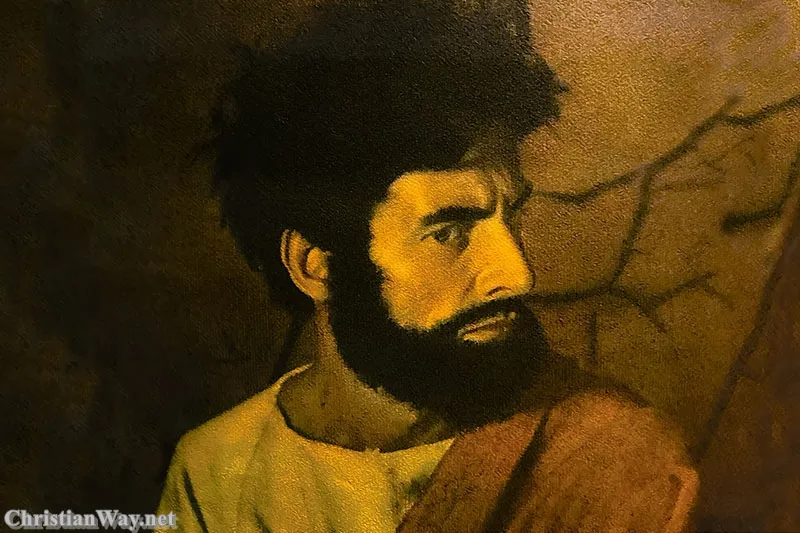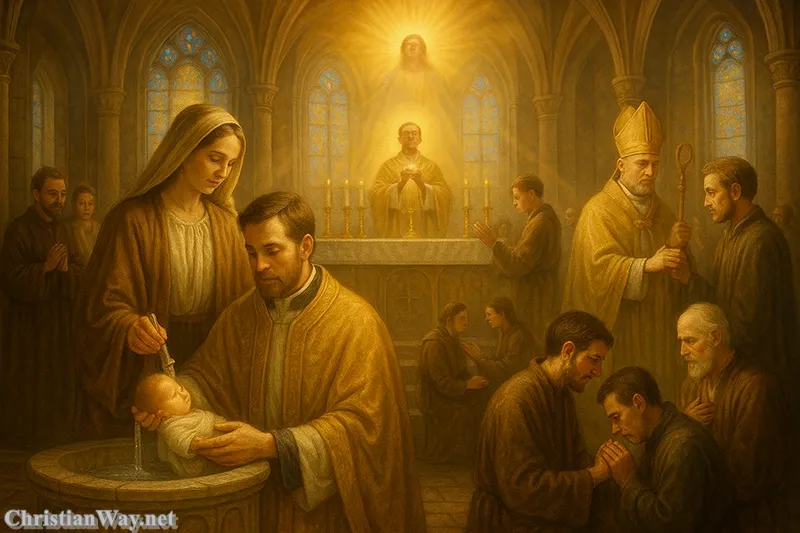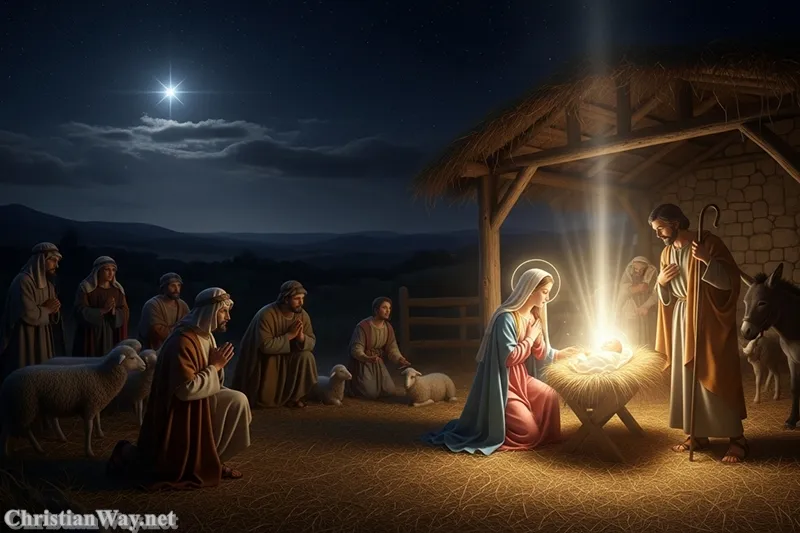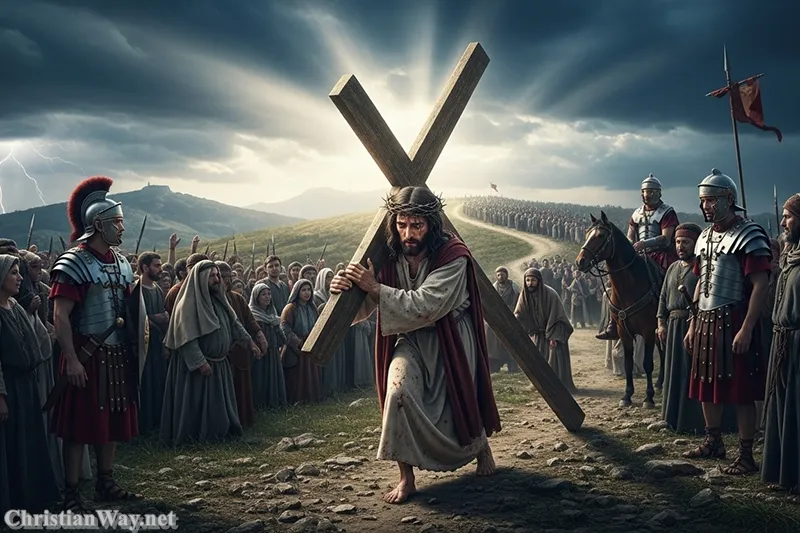Every human soul, at some point, longs to witness something beyond the ordinary — a glimpse of divine power breaking through the limits of the natural world. The miracles of Jesus Christ are precisely such moments: windows through which heaven’s light shines into human darkness. They are not spectacles meant to astonish, but signs that reveal who Jesus truly is — the Son of God, whose compassion and authority heal both body and soul.
Dear friends in Christ, the miracles of Jesus are not isolated wonders in the story of salvation. They are expressions of the same love that led Him to the Cross and the Resurrection. Each miracle is a revelation of the Kingdom of God breaking into the world: the blind see, the lame walk, the dead are raised, and sinners are restored to life. Through these acts, the Lord invites us not only to believe in His power but to encounter His heart — a heart moved with mercy for every suffering person.
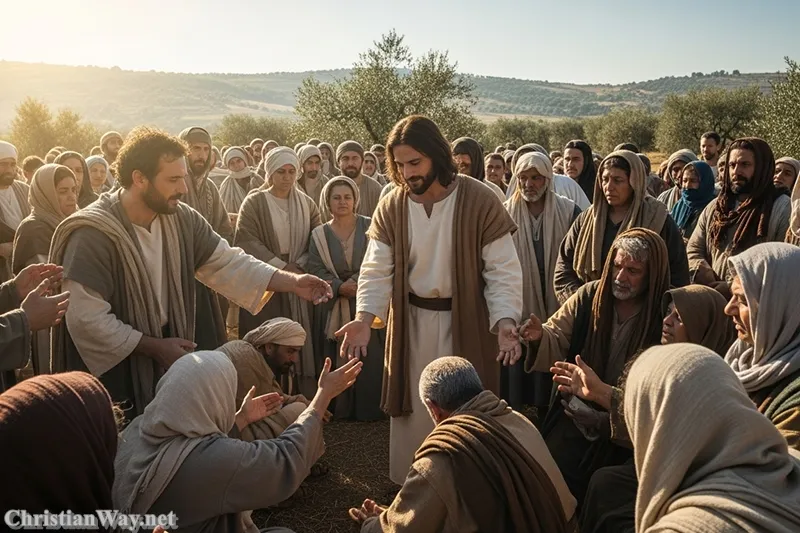
Let us journey together through the Gospel scenes of His miracles, and discover anew how they speak to our faith today.
The Miracles as Revelation of the Kingdom of God
When Jesus began His public ministry, He proclaimed, “The Kingdom of God is at hand” (Mark 1:15). His miracles were not simply proofs of that proclamation; they were the Kingdom made visible. In every act of healing, deliverance, and restoration, God’s reign of love was manifesting itself in the midst of human frailty.
The Power of God Made Present in the Flesh
In the Old Testament, miracles were signs of God’s mighty hand — parting the Red Sea, feeding Israel with manna, making water flow from the rock. Yet in Christ, these signs take on a new intimacy. No longer is divine power distant or impersonal. Now, the Word made flesh touches the leper’s skin, speaks peace to the storm, weeps at a friend’s tomb, and breaks bread to feed the hungry. The eternal God has drawn near, His compassion now clothed in humanity.
As Saint John writes, “The Word became flesh and dwelt among us, full of grace and truth” (John 1:14). Jesus’ miracles are that grace and truth in motion — God’s eternal mercy meeting the pain of the world.
Miracles of Healing: The Compassion of Christ
One of the most striking aspects of the Gospels is how frequently Jesus heals. Whether in crowded cities or along dusty roads, He responds to human suffering with tenderness.
Healing the Leper: A Touch of Restoration
In Matthew 8:2–3, a leper approaches Jesus, kneels, and says, “Lord, if you are willing, you can make me clean.” In that moment, Jesus stretches out His hand and touches him — something no one would dare to do — and says, “I am willing; be clean.” Immediately, the man is healed.
Here is no mere cure of disease, but a restoration of dignity. Lepers were outcasts, isolated from worship and community. By touching him, Jesus not only heals his body but welcomes him back into life. The miracle is both physical and spiritual: a sign that God’s mercy crosses every boundary that separates us from His love.
Healing the Blind: Opening Eyes to Faith
In John 9, Jesus heals a man born blind. The miracle is remarkable not just for the physical restoration but for its symbolism. As the man’s eyes are opened, so too his heart comes to see who Jesus is. From calling Him “a prophet,” he comes finally to worship Him as “Lord.”
Physical sight and spiritual faith meet in this story. Jesus Himself declares, “I am the light of the world” (John 9:5). Every healing of blindness in the Gospels points to this greater truth — that Christ came to open the eyes of all who live in spiritual darkness.
Healing the Paralytic: The Forgiveness of Sins
When friends bring a paralyzed man to Jesus (Mark 2:1–12), He first says, “Your sins are forgiven.” This shocks the scribes, who ask, “Who can forgive sins but God alone?” To show that He indeed has divine authority, Jesus then says, “Rise, take up your mat, and walk.” The man stands up and walks — body and soul both restored.
This miracle teaches us that the deepest healing Christ offers is forgiveness. Physical suffering is temporary; sin is the deeper paralysis that holds humanity captive. When Jesus heals, He addresses both — revealing that His mercy reaches to the root of our brokenness.
Miracles of Nature: The Creator’s Power in Human Form
The miracles of nature reveal Christ’s lordship over creation itself. In them, we see that the One who calmed the storm and multiplied bread is the same Word through whom all things were made (John 1:3).
Calming the Storm: Peace in the Midst of Fear
On the Sea of Galilee, when the disciples are terrified by wind and waves, Jesus stands and rebukes the storm: “Peace! Be still!” (Mark 4:39). The sea obeys Him, and there is great calm. The disciples, awestruck, ask, “Who then is this, that even the wind and sea obey Him?”
This miracle is more than a display of power; it is a revelation of peace. In the storms of our lives — fear, loss, anxiety — Christ remains Lord. His word, still today, speaks calm into our hearts.
Feeding the Five Thousand: Bread for the Journey
All four Gospels record the feeding of the five thousand (Matthew 14:13–21). With five loaves and two fish, Jesus feeds a vast crowd, and there are twelve baskets left over. This miracle prefigures the Eucharist, where Christ continues to feed His people with His very Body and Blood.
Just as He multiplied the loaves, so in every age He multiplies grace to satisfy the hunger of the human soul. In His hands, what seems small becomes abundance. The miracle invites us to bring our little offerings — our time, our talents, our love — and let Him transform them into something that nourishes the world.
Walking on Water: Faith Amid the Impossible
In the dark hours before dawn, the disciples see Jesus walking on the sea (Matthew 14:22–33). They are afraid, but He says, “Take courage; it is I. Do not be afraid.” When Peter steps out of the boat and begins to sink, Jesus catches him, saying, “You of little faith, why did you doubt?”
Here we learn that faith is not the absence of fear, but trust in the One who holds us. Jesus’ miracle invites every disciple to step out upon the waters of the unknown, keeping eyes fixed on Him who alone sustains us.
Miracles of Deliverance: Freedom from Evil
Christ’s miracles also include acts of deliverance — freeing people from demonic oppression. These reveal that His mission is to defeat the powers of darkness and restore humanity to spiritual freedom.
In Luke 4:33–36, Jesus commands an unclean spirit to come out of a man. The crowd exclaims, “What is this word? For with authority and power He commands the unclean spirits, and they come out!” His authority is not magical but divine; evil has no power in the presence of holiness.
In every age, the same truth stands: Christ’s victory is absolute. Evil may rage, but it cannot overcome the light. The miracle of deliverance continues wherever hearts turn to Him in faith, for as Saint John declares, “The Son of God appeared to destroy the works of the devil” (1 John 3:8).
Miracles of Resurrection: The Triumph of Life Over Death
The greatest signs of Jesus’ divine power are His miracles of raising the dead. They reveal that He is “the resurrection and the life” (John 11:25).
Raising the Widow’s Son at Nain
In Luke 7:11–17, Jesus encounters a funeral procession — a widow mourning her only son. Moved with compassion, He says, “Do not weep.” Then He touches the bier and commands, “Young man, I say to you, arise!” The dead man sits up and begins to speak.
This miracle is filled with tenderness. Christ’s heart aches for the grieving mother. He restores her son, but more than that, He restores her hope. The same compassionate Lord draws near to all who mourn, promising that death does not have the final word.
Raising Jairus’ Daughter
In Mark 5:21–43, a synagogue leader named Jairus pleads for his dying daughter. When word comes that she has died, Jesus says, “Do not be afraid; only believe.” He takes her by the hand and says, “Talitha koum” — “Little girl, arise.” She rises and walks.
This miracle reveals the tender intimacy of Christ’s power. He enters the room of death not as a distant deity, but as a loving Savior who takes our hand and calls us by name.
Raising Lazarus: A Prelude to His Own Resurrection
Perhaps the most powerful miracle before the Cross is the raising of Lazarus (John 11). After four days in the tomb, Jesus calls out, “Lazarus, come forth!” And the dead man emerges, still wrapped in burial cloths.
This moment prefigures Jesus’ own victory over death. In Lazarus’ tomb, we see the shadow of Easter morning. Christ shows that He has authority even over the grave — and that those who believe in Him “shall never die.”
The Purpose of Miracles: Faith, Not Spectacle
The miracles of Jesus are never meant to entertain or impress. Often, He even tells those healed not to speak of it. Why? Because the true purpose of miracles is to awaken faith, not to create fame.
When people asked Him for a sign to prove His authority, Jesus replied, “An evil and adulterous generation seeks a sign, but no sign will be given to it except the sign of Jonah” (Matthew 12:39) — referring to His death and resurrection. All His miracles point to that ultimate sign, where divine love conquers sin and death once for all.
Faith, then, is the response miracles are meant to inspire. As Saint Augustine wrote, “Miracles were done that men might believe in Christ; and believing in Him, they might have eternal life.”
Miracles Today: The Continuing Work of Christ
Do miracles still happen today? Yes — not always in the dramatic form we read in Scripture, but in the quiet workings of grace. Every conversion, every act of forgiveness, every healing of the human heart is a miracle of divine love.
When a sinner turns back to God, when hope rises in despair, when peace returns to a broken family — these are signs that the same Christ still works in our midst. His Spirit continues to touch the world through the sacraments, through prayer, and through the hidden sanctity of countless lives.
In the Eucharist especially, we encounter the greatest ongoing miracle: the transformation of bread and wine into the Body and Blood of Christ. As the faithful receive Him, the miracle of grace continues — the divine life of Christ given to us.
Reflect and Pray
Dear brothers and sisters, the miracles of Jesus remind us that we are never abandoned to the limits of this world. The Lord who once healed, fed, and raised the dead is the same Lord who walks with us today. His power has not faded; His compassion has not grown weary.
When life feels impossible, remember: the One who calmed the storm can calm your heart. The One who multiplied loaves can multiply your hope. The One who raised the dead can renew your soul.
Let us pray:
Lord Jesus Christ,
You are the healer of our wounds and the restorer of our life.
Open our eyes to see Your hand at work in our daily struggles.
Strengthen our faith to trust You when storms arise.
And grant that, through Your grace, we may become signs of Your love to others.
For You live and reign with the Father and the Holy Spirit,
one God, forever and ever. Amen.
— Fr. John Matthew, for Christian Way
